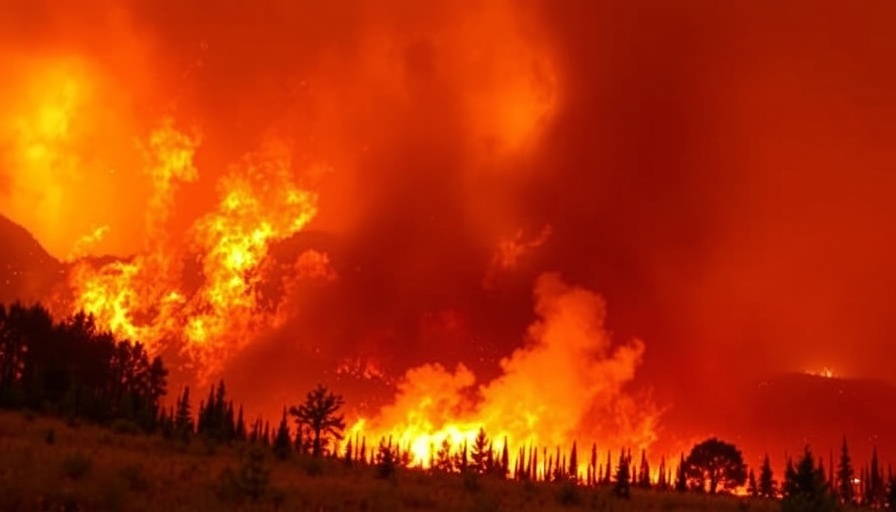
Understanding the Impact of Wildfires in the Western US
In recent weeks, two wildfires in the western United States have evolved into significant events, affecting not only the environment but also the safety and well-being of nearby communities. The Dragon Bravo fire, which has become a mega-fire on the North Rim of the Grand Canyon, has highlighted the extreme conditions that are resulting from climate change and leading to unpredictable weather patterns. This has become a stark reminder of the realities of wildfire season in America.
The Formation of Fire Clouds: A Terrifying New Phenomenon
The unprecedented conditions around these wildfires have led to the formation of pyrocumulus clouds—a fascinating yet dangerous phenomenon. These towering clouds occur when the air above a fire gets extremely hot, rising rapidly and creating a towering smoke column. Over Arizona’s blaze, these clouds have been observed for several consecutive days, contributing to the fire's intensity by generating powerful, dry winds that fan the flames. This weather pattern doesn't just threaten firefighters; it exacerbates the fire significantly, making containment efforts even more challenging.
Evacuation Orders and Emergency Measures
As the flames threaten homes and infrastructures, evacuation orders have been put in place in areas around the Utah fire. Citizens have had to quickly adapt to these emergency measures, underscoring the need for robust disaster preparedness in fire-prone regions. With more homes at risk, property buyers and investors must be highly aware of these environmental impacts as they navigate a volatile real estate market.
The Unseen Risks of Erratic Weather Patterns
Weather systems spurred by wildfires can create havoc that extends far beyond the immediate area. These erratic weather patterns produce downdrafts and rapid wind shifts, making it perilous for firefighting crews on the ground. Increased risks for firefighters not only endangers their lives but also complicates strategies for controlling and extinguishing wildfires. Understanding these complex systems is crucial for both the safety of emergency responders and the general public.
How Our Homes Are Affected
For homebuyers and sellers in areas susceptible to wildfires, understanding the implications of these conditions is vital. Not only does it influence property values, but it can also impact future investments in real estate. Homeowners must consider their safety and long-term plans for property ownership—especially in locations vulnerable to severe wildfires and accompanying emergency situations.
Preparing for Future Wildfires
The extreme conditions observed in Arizona and Utah emphasize the importance of being prepared for future wildfires. Homebuyers should seek properties equipped with fire-resistant materials and take proactive measures to create defensible spaces around their homes. Awareness and preparation can significantly reduce the risks associated with wildfires, making it essential for anyone looking to invest in or sell real estate in these affected areas to be informed and proactive.
As we continue to witness these dramatic and dangerous transformations in our environment, it is imperative for communities to come together in preparation and resilience—all while recognizing the importance of sustainable practices. Homeowners, future buyers, and property investors should advocate for eco-friendly standards, ensuring their investments contribute positively not just to their aesthetics, but also to the sustainable future of our planet.
 Add Row
Add Row  Add
Add 





Write A Comment